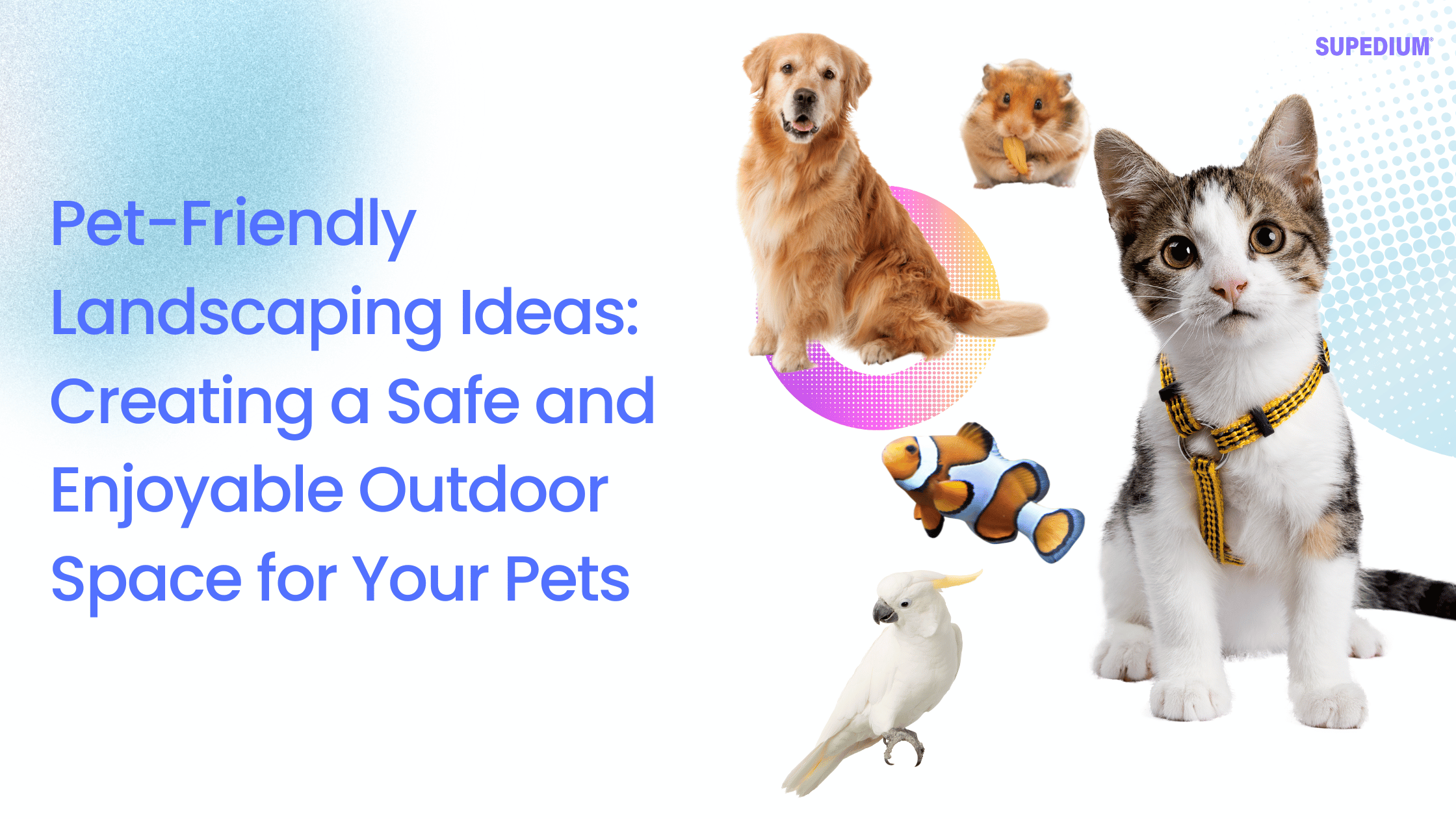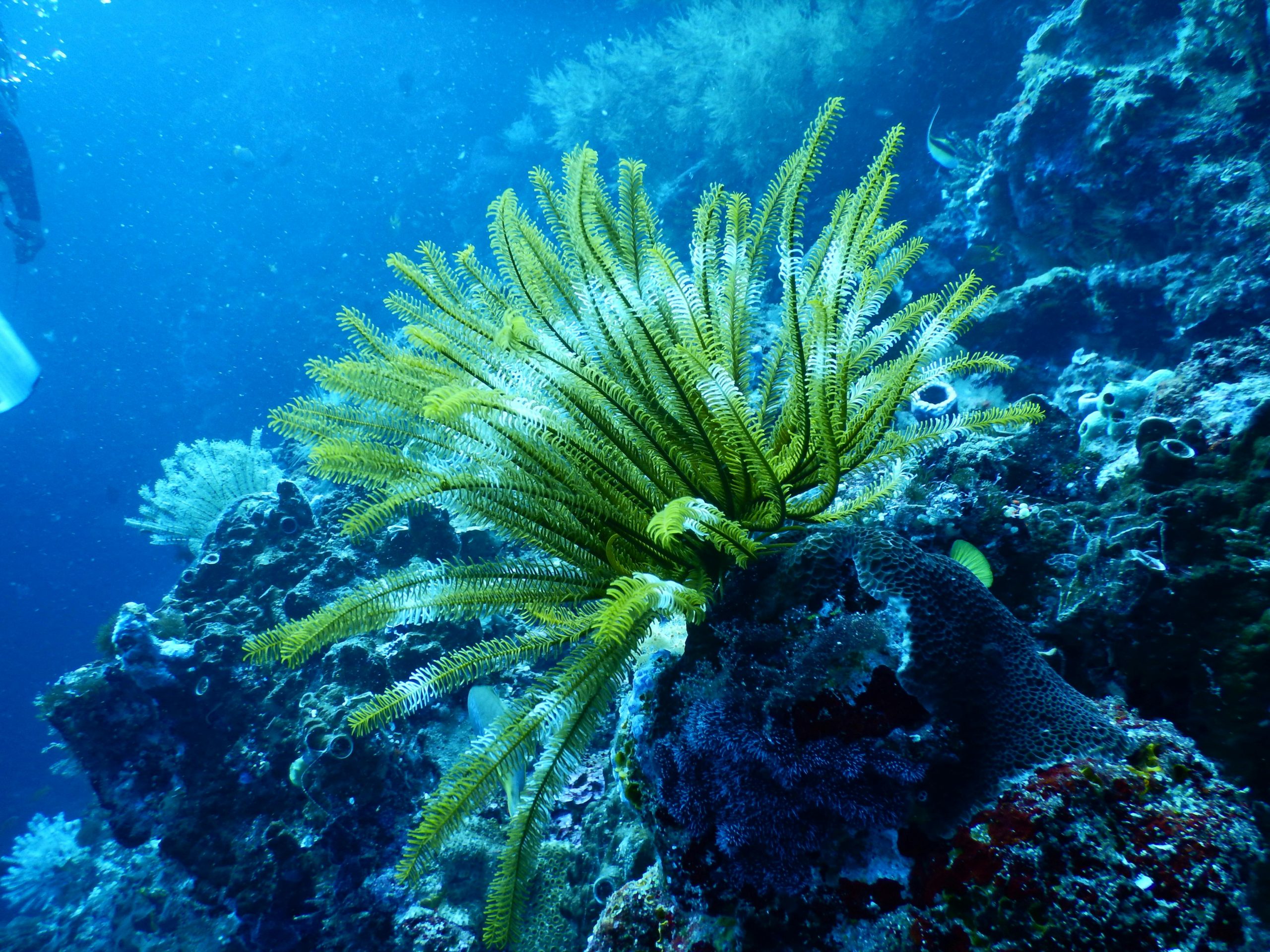Table of Contents
- 1 Key Considerations for Pet-Friendly Landscaping
- 2 Landscaping Ideas for Pet-Friendly Yards
- 3 Pet-Friendly Fencing and Barriers
- 4 Special Considerations for Different Pets
- 5 Sustainable and Eco-Friendly Pet Landscaping Tips
- 6 Maintenance and Upkeep for a Pet-Friendly Landscape
- 7 Conclusion
![]()
Creating a pet-friendly landscape is about more than just aesthetics—it’s about crafting an outdoor space where pets can safely play, relax, and explore. Whether you have a dog who loves to run, a cat who enjoys climbing, or small animals that need a secure space to roam, designing a landscape that accommodates their needs can enhance your outdoor living experience. Here, we’ll share practical tips and creative ideas to help you build a beautiful and functional yard that’s safe for your pets.
Key Considerations for Pet-Friendly Landscaping
Before diving into specific design ideas, there are a few key considerations to keep in mind when planning a pet-friendly landscape.
Pet Safety
Safety should be your top priority. Certain plants and materials can be harmful to pets, and there are some potential hazards in the yard that could pose a risk. For example, many common garden plants—such as lilies, azaleas, and daffodils—are toxic to dogs and cats. Additionally, it’s crucial to ensure your fencing is secure, especially if your pets like to dig or jump.
Durability of Plants and Materials
Pets can be tough on gardens, so it’s important to choose resilient plants and materials that can withstand heavy traffic. Opt for grass varieties that are durable, use hardier plants, and select pet-safe materials for paths and outdoor furniture.
Climate and Temperature Considerations
Climate can significantly impact your pet’s outdoor comfort. In warm climates, create shaded areas for pets to relax in, and in colder climates, consider adding shelters or raised platforms to keep them warm.
Landscaping Ideas for Pet-Friendly Yards
There are many ways to design a pet-friendly landscape that works for both your pets and your outdoor space. Here are a few ideas:
Pet Play Zones
1. Designated Play Areas
Create a designated area where your pet can safely run, jump, and play. Soft grass or mulch makes for a great surface for play. For active dogs, consider adding obstacle courses or agility equipment like tunnels or hurdles. You can also include toys like balls or frisbees in this area.
2. Sand or Gravel Play Areas
If your dog enjoys digging, consider creating a dedicated sand or gravel pit where they can dig freely without causing damage to the rest of your garden. It’s easy to maintain and offers your pet a space to express their natural digging behavior.
3. Water Features
Water features like shallow ponds, fountains, or sprinklers can provide entertainment and cooling relief for your pets, especially during the summer. Shallow pools are great for dogs to splash around in, while cats may enjoy the gentle sound of a water feature.
Pet Paths and Trails
1. Durable Pathways
Create durable pathways with materials such as flagstone, rubber mulch, or decomposed granite. These are easy to clean and can withstand the wear and tear of pet activity. Paths also encourage pets to explore different parts of the yard and can help protect your garden beds.
2. Digging Pits
Designate a specific area in your yard for digging. Dogs that love to dig can do so in this section, keeping your garden free from destruction. Sand or loose soil works best for this purpose.
Outdoor Shelters and Pet Rest Areas
1. Pet Houses and Shade Structures
Provide your pets with a shaded spot or a small house to retreat to when they need a break from the sun or rain. A doghouse or even a simple canopy can make a big difference in their comfort.
2. Cozy Pet Nooks
Pets love having a quiet, secluded space to rest. You can create cozy corners with cushions, blankets, or even small pet tents. Consider adding a few small hiding spots or tunnels for pets that enjoy feeling secure in an enclosed space.
Plants and Greenery
1. Pet-Safe Plants
Many plants can be harmful to pets, so choosing pet-safe options is essential. Safe plants include sunflowers, marigolds, petunias, and lavender. Additionally, opting for native plants that are adapted to your climate can make maintenance easier and safer for pets.
2. Protecting Garden Beds
If you have delicate plants or flowers, consider using raised garden beds or creating borders around your flowerbeds to protect them from pet paws. You can also install pet-safe fencing around certain sections of your yard to keep your pets out of sensitive areas.
3. Aromatic Plants for Pets
Herbs like catnip, mint, and rosemary can attract pets and enrich their sensory experience in the garden. Consider planting these in pet-friendly zones where your pets can safely explore them.
Pet-Friendly Lawn Care
1. Durable Grass Varieties
Choosing the right grass for your yard is critical when you have pets. Varieties like fescue, Bermuda, or Zoysia are durable and resistant to wear, making them ideal for high-traffic areas.
2. Fertilization and Pest Control
Be mindful of using non-toxic fertilizers and pet-safe pest control methods. Many chemicals used to maintain lawns can be harmful to animals, so choosing organic or pet-friendly products ensures your pets are safe.
3. Lawn Zones
Consider designating specific areas of your lawn for pets to play. This way, you can protect delicate garden areas while giving your pets a place to enjoy.
Pet-Friendly Fencing and Barriers
Proper fencing is essential in keeping your pets safe and secure in your yard. Here are some considerations when building or adjusting your fence for pet safety:
Secure Fencing for Pets
Ensure your fence is tall enough to prevent your pets from jumping over. A height of at least 4-6 feet is recommended, depending on your pet’s breed and jumping ability. Also, make sure the bottom of the fence is secure, as some pets may dig to escape.
Material Options for Pet-Friendly Fencing
Materials like vinyl, wood, or wire mesh are great choices for pet-friendly fences. Avoid using fencing with wide gaps, as smaller pets could slip through. You can also consider adding a barrier along the bottom of your fence to prevent digging.
Gate Security
The gates in your yard should be secure and self-closing. Installing latches or locks ensures that pets cannot escape or open the gate themselves.
Special Considerations for Different Pets
Each pet has different needs and preferences when it comes to outdoor spaces. Here are some tips for creating a pet-friendly environment tailored to various types of pets.
Dogs
Dogs require plenty of space to run and play. A fenced-in yard with soft grass or a sandpit for digging is ideal for them. Be sure to provide shade and water for them to stay hydrated and cool, especially on hot days.
Cats
Cats love vertical spaces, so incorporating climbing structures such as cat trees or shelves will allow them to explore. They also appreciate having quiet spots for resting, so providing a secluded corner with soft cushions is a great idea.
Small Pets (e.g., Rabbits, Guinea Pigs)
For smaller pets, create a secure area where they can safely roam. Consider building a rabbit or guinea pig enclosure, using secure mesh or fencing. If you have other outdoor structures like a raised bed or playpen, these can also work well for small pets to explore in safety.
Sustainable and Eco-Friendly Pet Landscaping Tips
Pet-friendly landscaping doesn’t have to be harmful to the environment. Here are some ways to make your outdoor space more eco-friendly while ensuring it’s safe for your pets.
Native Plants
Native plants are better suited to the local climate and require less maintenance, which means they are also more sustainable. They’re less likely to be harmful to pets and can help conserve water and reduce pesticide use.
Water Conservation
Installing water-saving irrigation systems, such as drip irrigation, will help conserve water while keeping your pets hydrated. Additionally, installing a rain barrel can provide an eco-friendly way to collect water for garden use.
Recycled and Non-Toxic Materials
Using recycled materials for paths, furniture, and outdoor structures can reduce your carbon footprint. Opt for pet-safe, non-toxic paints, sealants, and finishes to ensure your pets are not exposed to harmful chemicals.
Composting and Organic Gardening
Composting pet waste (in a safe and controlled manner) and using organic gardening methods can help reduce your environmental impact. Avoid using harmful chemicals that could harm both pets and local wildlife.
Maintenance and Upkeep for a Pet-Friendly Landscape
Once your pet-friendly landscape is complete, regular maintenance will ensure it remains safe and enjoyable for both pets and humans.
Regular Cleaning and Hygiene
Clean up pet waste regularly and dispose of it properly. Keep the yard tidy by removing any fallen leaves, twigs, or other debris that could pose a choking hazard for pets.
Routine Lawn and Plant Care
Trim your plants regularly to prevent overgrowth and maintain their health. Also, check paths and other pet areas for wear and tear and make necessary repairs to avoid injury.
Ongoing Safety Checks
Make a habit of checking your fencing, gates, and other areas of the yard for potential hazards like sharp edges or broken sections. Regularly inspect plants to ensure none are toxic to pets and that no new pests have made an appearance.
Conclusion
Creating a pet-friendly landscape involves a combination of safety, durability, and creativity. By considering your pet’s needs and carefully choosing plants, materials, and features, you can build an outdoor space where they can thrive. Whether you have a dog, cat, or small pet, the right landscaping ideas can transform your yard into a safe, enjoyable, and aesthetically pleasing environment for everyone.
Share This





Be the first to comment